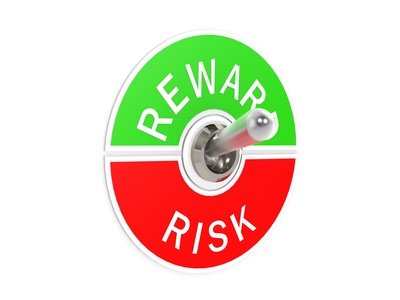There are more and more stories in the news related to managing and mitigating risk. As companies go out of business, struggle to attain Sarbanes-Oxley compliance, etc, doesn’t it seem a bit radical to recommend building an appetite for risk? Not if you build your appetite for risk, backed with solid decision-making skills. Instead, it will give you the potential to obtain significantly improved business results.
In the past month, I’ve worked with three significantly different projects – implementing Sarbanes-Oxley requirements, evaluating inventory model options that support changing sales requirements and evaluating a business. The key ingredient in each was risk. If the sole objective were to mitigate risk, none of the projects would yield satisfactory results. On the other hand, the opposite is also true.
So, why increase your appetite for risk? First, two points of clarification: Risk for the sake of risk makes no sense (it’s a form of gambling). And risk that even blurs the lines of integrity is unacceptable. Aside from that foundation, building your appetite for risk makes sense if the risk correlates to an improved end result – a return on investment, improved condition for the people involved, etc. For example, in the evaluating a business example, you’d never purchase a business that contained zero risk because the cost would be prohibitive. Instead, the opposite is true – a business opportunity comes from risk. Typically, if there is no way to improve business results after purchasing a business (either through a turnaround or through innovation / raising of the bar), there is no incentive to buy a business (unless it is priced significantly below market). Yet, if there is an opportunity to improve business results, it is always accompanied with risk.
The key is to understand the risk, its probability of occurrence, potential seriousness of impacts, and evaluate it in relation to the expected returns. For example, in the inventory models example, a common approach to achieving an increased sales plan is to increase inventory in direct correlation to the sales increases. However, this assumes what is perceived to be a zero risk thought process (although it can actually be quite risky), which has significant cash flow impacts (for every dollar of inventory, it is one more dollar tied up that cannot be used for any other purpose). Instead, review inventory model options, associated risks, their probability, potential impact, ways to manage, tradeoffs, etc. This process will result in an improved business result – less cash tied up in inventory while supporting the sales plan – and, many times, with improved support to the sales plan.
Increasing your appetite for risk is not for the faint of heart – and requires persistence. Take a step back and think about the risk-reward options. If it makes sense, proceed. Gather data, ask questions, develop options (alternatives for your decision or project), and act. The rewards will be staggering.



